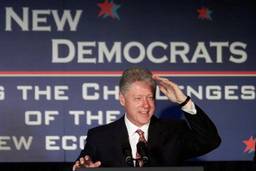Peace in Palestine Now
The latest round of killings in Gaza and Israel must spur the United States to broker a lasting peace.
Marilyn Katz

After a week of strafing, rocket fire and death, a ceasefire appears imminent between Israel and Hamas. Everyone — most obviously the residents of both places — will breathe a sigh of relief, but if that is all we do, that will be insufficient, for this is merely a pause before the next violent eruption.
The only agreed-upon facts of the conflict that has taken center stage over the past week are the death counts. Less agreed upon, and the subject of various timelines and debates, are questions of who did what to whom, and when. Was the latest round of fighting set off by militant groups in Gaza firing shells into the south of Israel? Or was it started by Israeli soldiers killing an unarmed 13-year-old Gazan boy while he played? And, of course, why now?
Some say the escalation was a move by Hamas to undermine Fatah (its rival party) and its bid for enhanced status at the United Nations. Others say it was a move by Israel to strengthen Fatah’s bid, demonstrating the unequal force of the Middle East’s only nuclear power against a people dispossessed. Cynical commentators ascribe the conflict to Israeli Prime Minister Benjamin Netanyahu’s desire to enhance his political party’s position prior to the planned elections in January. And still others assert that in the wake of President Barack Obama’s election, with the prospect that he would press for renewed peace talks, the escalation was meant to draw Hamas into increased and violent conflict in order to substantiate an Israeli claim that they are not “reliable partners” with whom one can negotiate.
Whatever the perspective, one thing is clear: It is well past time to address the underlying issues that have made Israel/Palestine a battleground. These issues have only become more difficult since the last real negotiations between the parties that produced the Oslo Accords in 1993.
Although the Oslo Accords were designed to be temporary agreements for a five-year period leading to a negotiated settlement of the territorial conflict between Israel and Palestine, nearly 20 years have passed since they were signed. While the process was aborted with the assassination of then-Israeli Prime Minister Yitzhak Rabin, the accords — with their establishment of the Palestinian Authority, their division of Palestine into Areas A,B, and C, and their granting of broad authority to Israel over virtually every aspect of Palestinian life — have stayed in place. And rather than lead to a healthy transition, the accords, as implemented, have made the situation more complicated and ultimately more unsustainable and dangerous for all.
In 1993 the issue of a negotiated settlement with land swaps was already difficult, with an estimated 300,000 settlers already ensconced in Palestine (including East Jerusalem). And while Palestinians still comprise the vast majority of residents, the settler population has more than doubled since then, with an estimated 600,000 settlers living in the West Bank and East Jerusalem — all moved there in violation of international law and with the support or complicity of the Israeli government. While some may laud the settlements as good for an Israel that wishes to expand from “the Jordan River to the Mediterranean Sea,” the unilateral seizure of Palestinian land, the destruction of millennia-old Palestinian-owned olive groves and the imposition of Israeli military law on Palestinians in the area breed anger and resentment, not only in the occupied lands but throughout the Arab and Muslim worlds.
Whereas in 1993 there was relatively free movement of Palestinians across the land, today Palestinians’ movement is greatly restricted, in turn making normal life and work unconscionably difficult. Palestinians are prohibited from entering East Jerusalem as well as the Israeli cities where they once worked, studied or enjoyed the sea unless they have a special permit granted by the Israeli government. Palestinians traveling from one village to another in the West Bank are prohibited from using many roads, being required instead to use time-consuming circuitous routes meant for Palestinians only.
With restriction on movement and a prohibition from entering Israel, an entire generation of Palestinians has grown up knowing Israelis only as the settlers up the hill or the armed men and women who stop cars at check points, guard the perimeter of settlements or enter their communities at will. So too for the Israeli youth, who are no longer likely to see Palestinians on the streets of Tel Aviv and are prohibited themselves from entering Palestinian cities like Ramallah. (Israelis, except for settlers, are barred by Israeli law from entering Palestinian areas.) They know Palestinians only as the “other” that they confront at check points or guard against when doing their military service.
Where there was once vigorous commerce in Palestine, today there is little. Adding to the difficulty that lack of ease of movement creates is the fact that all imports and exports are controlled by the Israeli government. To Israelis, such control is considered necessary to prevent the flow of contraband. To Palestinians, from the young people who were delayed in taking their SAT because the Israelis held the tests back to the U.S.-educated businessmen who are still waiting for the Israelis to release the geo-thermal equipment they ordered to start their business and meet the Palestinian need for new sources of energy, it is quite another matter. To them, Israeli control of imports and exports is seen as both untenable and an intentional ploy to make Palestine unable to function as an independent state, and therefore unsupportable.
And then there are the deaths. From 2000 to 2012, the conflict has claimed the lives of 1,604 Israelis and more than 13,000 Palestinians.
This is enough; it is time for the killing to stop.
Some say that the two-state solution embraced by the international community for these past two decades is dead due to the very changes mentioned above. But the alternatives are no more tenable or sustainable than the current deadly status quo. Israelis will never accept a single democratic secular state from the Jordan to the Mediterranean with every citizen having equal rights and votes, as that would render Israel a state where Palestinians were the majority and therefore no longer a Jewish state. Palestinians — and the world — will never accept a two-class state with diminished rights of citizenship to its Palestinian majority. We know the fate of such states.
The only solution is the two-state solution, and the time for the United States to join the Arab League and European leaders to press for it is now. Why should Americans care? Because we do have a long-standing and unbreakable bond with Israel — and we will continue to be dragged into the conflagrations, as we have been over and over these past years. Because it is in our national interest to resolve an issue which every demagogue uses as an excuse for extremism and violence. Because, most importantly, it is the right thing to do, to act by a moral compass that recognizes the just claims of two people on land that both have occupied for millennia. Because only with that just settlement can there be peace.
Our president has just been re-elected with the support of 70 percent of Jewish Americans, support that rejected the bellicose warnings of the Sheldon Adelsons and the Mitt Romneys. He has the mandate to press for peace, he has the relationships to press for peace.
If not now, when? If not him, then who? There is an opportunity — and a necessity — to act now.

I hope you found this article important. Before you leave, I want to ask you to consider supporting our work with a donation. In These Times needs readers like you to help sustain our mission. We don’t depend on—or want—corporate advertising or deep-pocketed billionaires to fund our journalism. We’re supported by you, the reader, so we can focus on covering the issues that matter most to the progressive movement without fear or compromise.
Our work isn’t hidden behind a paywall because of people like you who support our journalism. We want to keep it that way. If you value the work we do and the movements we cover, please consider donating to In These Times.







